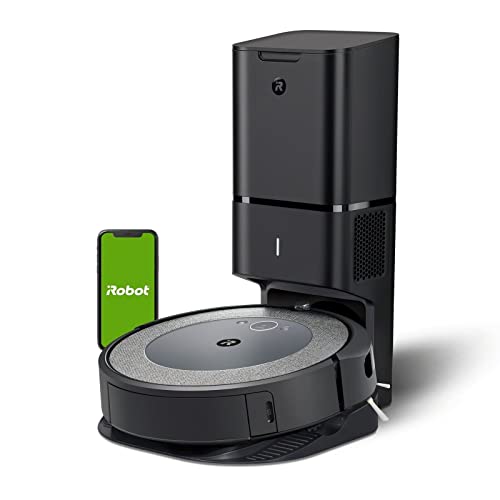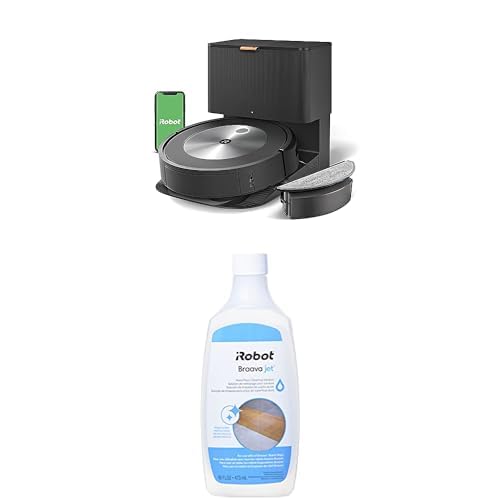지역센타회원 | 10 Things That Your Family Teach You About Self Emptying Robot Vacuums
아이디
패스워드
회사명
담당자번호
업태
종류
주소
전화번호
휴대폰
FAX
홈페이지 주소
 Self Emptying Robot Vacuums
Self Emptying Robot Vacuums Self-emptying robot vacuums allow you to clean without touching anything. They don't require you touch or empty their dustbin which is a major benefit for those suffering from allergies.
Self-emptying robot vacuums allow you to clean without touching anything. They don't require you touch or empty their dustbin which is a major benefit for those suffering from allergies.Instead, the robot will dump its contents into a larger base that can store up to 60 days of dirt. It will then empty itself before returning to its dock.
Runtime Increased
Most robot vacuums have an onboard dust bin that has to be empty at the end of each cleaning cycle. Auto-emptying allows users to enjoy an effortless hands-free experience. This feature is available on a few models, even at the entry-level but it's also a major selling point for top-quality robot vacuums.
Self-emptying robotic cleaners could save homeowners much time. For those who have to manage children, work, and chores they do not want the hassle of stopping their robotic cleaners in order to empty the dust bin on board. Self-emptying models provide users with the convenience of having a clean home without needing to stop their robot cleaner.
Certain models that self-empty are able to also mop in addition their primary functions. They empty their mopping tanks and then refill them with fresh water in preparation for the next cleaning cycle. These models also clean and dry the pads. This will ensure that the device is ready for its next cleaning cycle and prevent the buildup of grime inside the robot.
iRobot's latest version of the Roomba robot comes with some amazing features that will help busy homeowners get their home cleaned with minimal effort. Its ingenious Dirt Detection System can identify dirt accumulations and focus cleaning efforts on the area. This ensures that the entire floor is cleaned. The bot can be utilized to schedule multiple cleanings throughout the day, and create virtual zones.
Another notable feature of the iRobot Roomba j7+ is its intelligent mapping and navigation capabilities. The robot is capable of recognizing floor materials, furniture and other obstacles, which can help improve mopping efficiency and navigation. It can also be scheduled to clean at a particular time, and the in-app map allows homeowners to modify the device.
The Neato BotVac D8 offers a excellent option for those who want to combine the benefits and features of a robotic mop and a robotic vacuum. It can mop and vacuum and its onboard reservoir holds up to 45 days of dirt and debris. It comes with an automatic dirt sensor, as well as an auto-emptying base.
Continuous operation
Robot vacuums are great for cleaning dirt and debris from floors that are hard, but they do not have the suction power of upright models or canister models. They are also often unable to remove dirt and grime that is embedded in carpets and rugs and dust close to thresholds and baseboards. Even the most powerful robots are susceptible to getting caught in socks, toys, and cords. This makes them less efficient than manual cleaners.
You'll have to empty your dustbin often in order to avoid having to empty it each time you use your robot. This can be a huge hassle. The most recent self-emptying robotic vacuums have an automatic docking station that cleans and empty dust bins without you having to do a thing.
This feature can drastically cut down your cleaning times and the amount of dust you need to eliminate which results in an environmentally friendly and sustainable device. It can also help you keep your home free of dust particles that are the main cause of allergy in households.
Most of the top-rated robotic vacuums come with a huge dustbin that can store weeks of dirt prior to needing to be emptied. You can program the device to empty the dustbin at a predetermined time. This lets you enjoy a stress-free and hands-free cleaning experience.
The most advanced models come with the ability to map, which self emptying robot vacuum is the best allows them to map the entire house. They can also save the floor plan and then use it later. This lets the robot avoid repeating areas, while also increasing efficiency and reducing unnecessary moves. The latest robovacs utilize gyro, camera-, radar-, or laser (laser distance sensor or LDS) guided systems to create an outline of your space.
Apps that let you schedule cleaning sessions and configure no-go zones are available for the most well-known self-emptying robotic vacuums. The app allows you to monitor and control the cleaning process remotely. This is especially helpful when you are expecting guests because you will be assured that your home will be clean.
Less downtime
The standard robot vacuums collect dirt in an internal dustbin, which they must empty every two cleaning cycles. The self-emptying base takes away this step, enabling the appliance to run nonstop between sessions without interruption, or the necessity of returning to its charging dock to get more power. This reduces the downtime between cleaning cycles and enables larger homes to accomplish wall-to-wall cleaning in a single session.
Certain models allow you to set up a cleaning routine and use voice assistants such as Alexa or Google Assistant for control. You can create no-go zones and monitor the robot's moves. You can also modify settings, such as suction power, or the amount of water that is dispensed to floors. These extra features may come at an additional cost, but they could assist you in making the most out of your robotic vac.
A self-emptying robot vac will also remove the need to move and empty the container, which is a plus for those with allergies or who have other tasks to do in their home. The base usually holds weeks or even months worth of dirt and debris, so you'll only have to empty it once every 30 or 60 days, which is the same amount of time you'd need to change the bin on a regular vacuum.
While many find a self-emptying robot vacuum more convenient, the feature won't work for all. For those who can't afford the extra expense it is possible to purchase a lower-cost model with an internal dustbin that is designed to deal with weeks of dirt. You'll only need to replace the disposal bag on a regular basis.
The best robot vacuum and mop self empty self Emptying Robot Vacuum-emptying robotic vacuums will have a high capacity for holding dirt as well as continuous operation and the ability to alter settings like suction power. Look for models with integrated cameras to keep track of your floors. Also, make sure that the device can be linked to an app that allows you to set a schedule for cleaning and set no-go zones. You can also monitor the robot's progress and adjust other settings. Compare the specifications and analyze the performance of the devices to find the best self-emptying robot vacuum self emptying robot vacuum and mop emptying robot vacuums.
User interaction is less
As we become more accustomed to turn on street lamps using electricity, calculate pi to a billion places and purchase items at our fingertips through our smartphones, it's only natural that we would witness an increase in the number of home robotic helpers that can take care of themselves. Self-emptying robots vacuums take the idea one step further by cleaning their own collection canisters in between cleaning sessions.
These robots have small dustbins which are usually just four inches high. They don't have enough room to accommodate a large dust bin, like one you'd find on a Dyson upright. They are also generally bagless that means they need frequent manual emptying because a full dustbin can easily become clogged with hairballs, and other debris.
These cleaners do not empty their trash bins manually and instead, they transfer all dirt into a bag at the base of the docking station. These bags are designed to limit dust spread and also prevent dust leakage depending on the model.
This hands-free maintenance is not only less irritating, but it allows the robot to run for longer between emptying cycles. The robot doesn't have to go back to the base to empty its collection canister before continuing to operate. The robots can clean up more rooms in one session due to the decreased time between cleaning.
The simplified maintenance also provides more convenience for parents, busy homeowners or anyone else with a busy lifestyle. You can use your automatic cleaner throughout the week without having to empty the canister. It will continue to run until it is required to return to the base to empty it weeks later. These self-emptying robot vacuums are compatible with many of the smart home systems available today. This lets owners monitor and manage their robot vacuums from anywhere in the world using their smartphone apps or voice assistance. This level of integration provides proactive maintenance as well as transparency, and the ability to customize cleaning schedules, designate certain rooms, and even create virtual "no-go" zones for the cleaner to stay out of while it's working.




